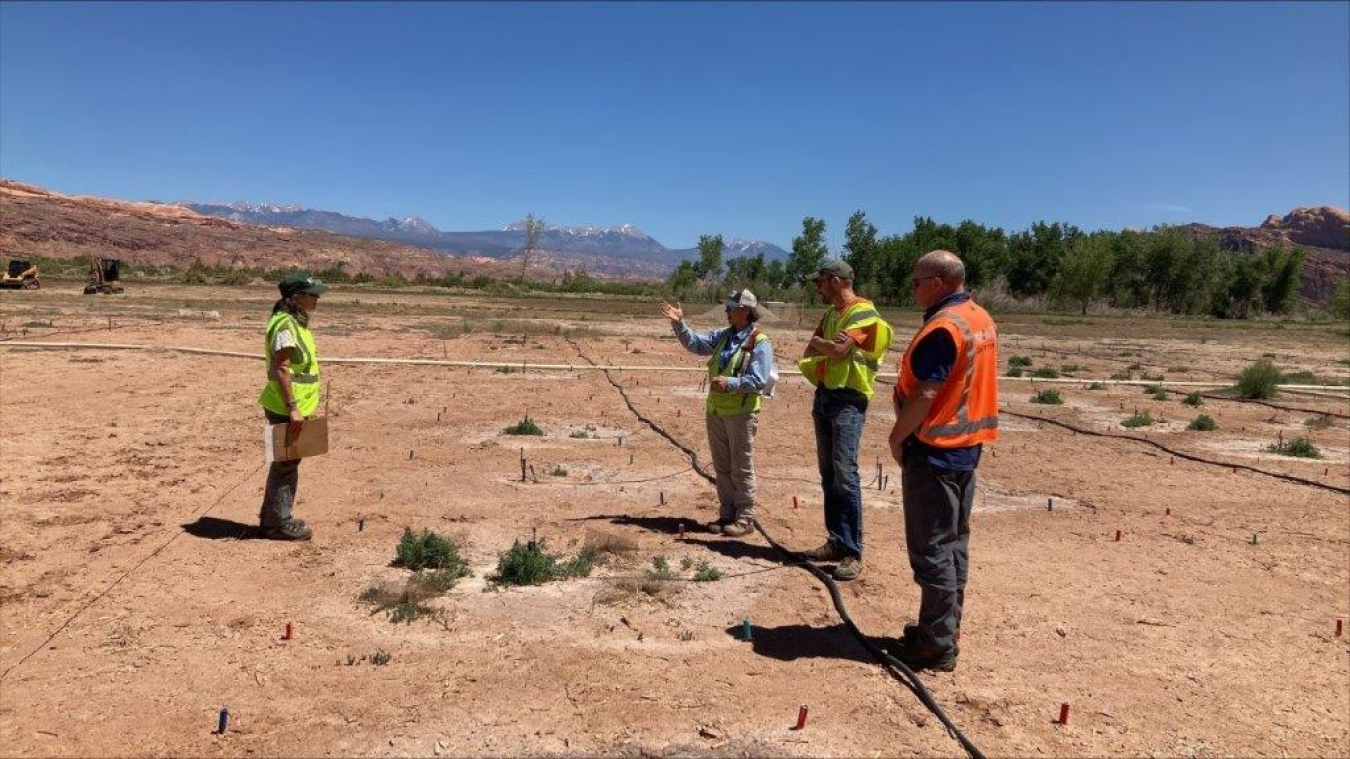Biologists from EM’s Moab Uranium Mill Tailings Remedial Action (UMTRA) Project and the local U.S. Geological Survey (USGS) office are collaborating on an experiment to revegetate a challenging area of the cleanup site.
Office of Environmental Management
June 7, 2022
OAB, Utah – Biologists from EM’s Moab Uranium Mill Tailings Remedial Action (UMTRA) Project and the local U.S. Geological Survey (USGS) office are collaborating on an experiment to revegetate a challenging area of the cleanup site.
In the fall of 2020, staff members from both agencies installed 336 revegetation plots in an underperforming area — basically nothing grows. Vegetation challenges in that area include flooding during high water from the adjacent Colorado River, topsoil removal in past remediation activities, poor soil quality, noxious weed growth, lack of precipitation and bottomlands with little to no drainage.
The experimental plots were designed to be scientifically sound and statistically strong, with three different seed mixes planted. Sixteen different treatments were performed, including mulch, some of which came from onsite chipped trees; soil amendments like fertilizers; installation of mesh wire on the topsoil to capture wind-blown seeds and debris; the inoculation of biocrust soil stabilizers; and mowing. Staff also created an irrigation system so that select plots are watered on a specific schedule.
The first round of plot data was collected last summer, creating a data baseline. The next round will be collected this month. Promising results are already being seen, with more vegetation growth in some plots.
The study was intended to last two years, but staff members from both agencies think they may continue with the experiments. The information and knowledge gained through these experiments could help EM achieve the vision of having self-sustaining native plant populations on the remediated areas of the site.
To receive the latest news and updates about the Office of Environmental Management, submit your e-mail address.

